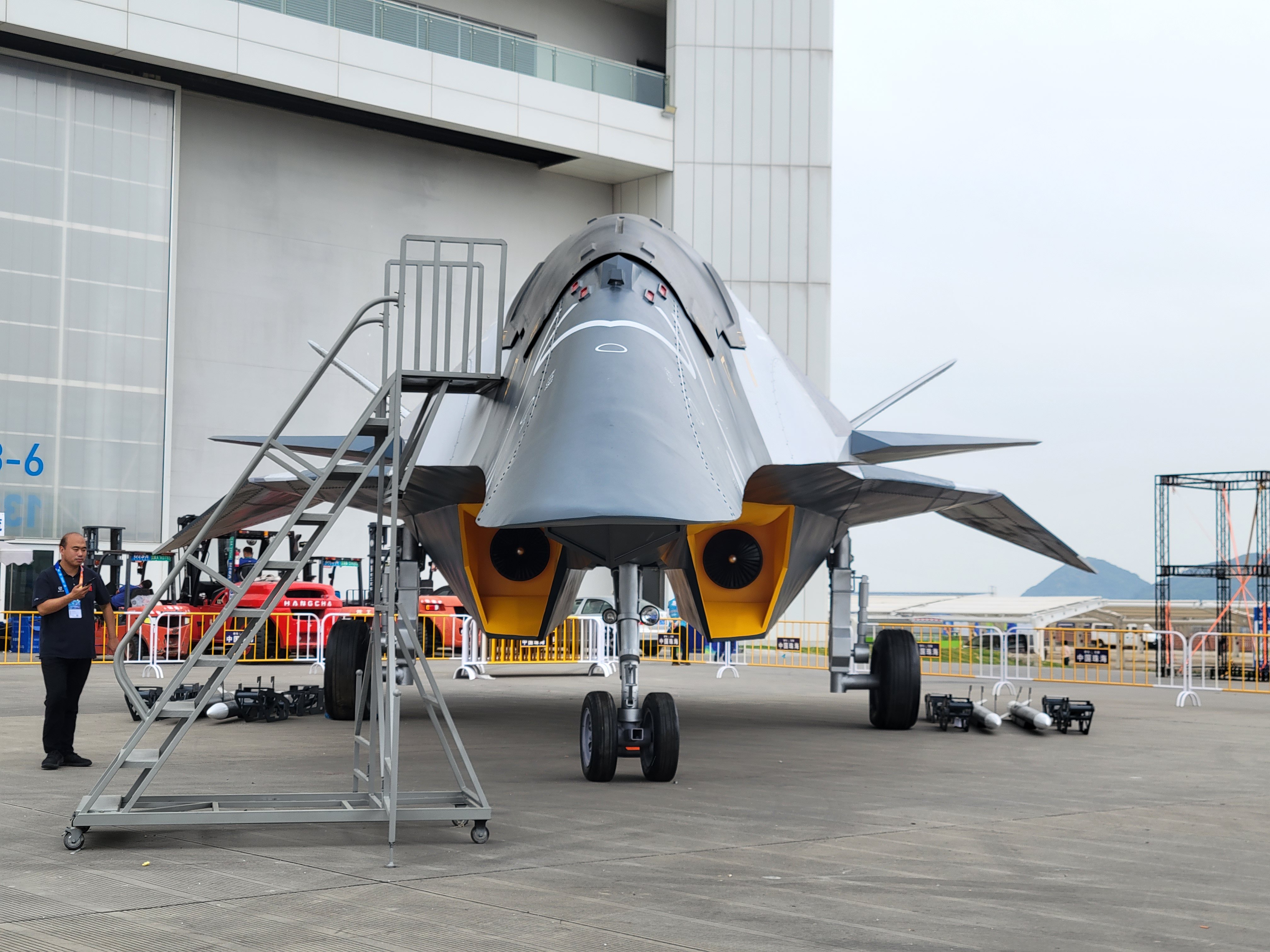SOURCE: AFI


In a move that has captured global attention, the Aviation Industry Corporation of China (AVIC), China’s state-owned aerospace and defense conglomerate, recently unveiled a conceptual model of its next-generation fighter jet, known as the “Baidi B-Type” aerospace fighter. The design, part of China’s ambitious “Nantianmen Project,” represents AVIC’s vision for a 6th-generation fighter that combines futuristic aesthetics with advanced combat capabilities, appearing as if it stepped out of a science fiction universe like Star Wars.
According to information displayed alongside the model, the Baidi B-Type is a dual-mission version of the “Baidi” series, intended for both air-to-air and air-to-ground combat. Positioned as the mainstay of China’s future aerial combat fleet, the Baidi B-Type brings a range of innovative modifications and cutting-edge technology to the table.
Among its most striking features is a highly modified rear fuselage. This updated design optimizes the aircraft’s aerodynamics, allowing AVIC to significantly increase the internal weapons bay capacity. With an expanded magazine volume, the Baidi B-Type can accommodate a broader arsenal of air-to-ground munitions, making it a highly versatile platform for complex combat scenarios across different mission profiles.
AVIC has made substantial upgrades to the avionics suite of the Baidi B-Type. This comprehensive avionics overhaul is aimed at improving sensor fusion, situational awareness, and electronic warfare capabilities, ensuring that pilots have access to real-time, actionable intelligence in high-stakes environments. With cutting-edge avionics, the Baidi B-Type is designed to excel in networked combat, interfacing seamlessly with other assets in China’s future air combat framework.
Additionally, AVIC has focused on improving cockpit ergonomics. The redesigned cockpit promises enhanced comfort and intuitive controls, enabling pilots to manage complex combat tasks with reduced fatigue, especially in high-speed, high-altitude scenarios. The improvements in cockpit design signal a shift towards more pilot-centered interfaces that prioritize ease of use and rapid response capabilities.
One of the critical focus areas of the Baidi B-Type design is maintainability. AVIC has streamlined the maintenance process, aiming to reduce the turnaround time for repairs and refits. Simplified maintenance procedures, coupled with improved deployment capabilities, are intended to increase the “attendance efficiency” of the fighter, ensuring it can sustain high operational tempos in prolonged engagements or multi-theater operations.
These changes are vital for a 6th-generation fighter, as quick deployability and minimal maintenance downtime are essential attributes for a frontline combat aircraft expected to operate at high efficiency across diverse and demanding missions.
The Baidi B-Type is central to China’s “Nantianmen Project,” an overarching program that aims to develop next-generation air dominance platforms capable of shaping the battlefield of tomorrow. The project’s name, “Nantianmen” (loosely translated as “South Heaven Gate”), evokes imagery of celestial prowess, underscoring China’s intention to achieve both air and space supremacy with advanced aerospace systems.
As China looks to outpace rivals in next-generation fighter technology, the Nantianmen Project reflects the country’s commitment to pushing the boundaries of aerospace innovation, blending high-speed capabilities, modular weapon configurations, and extended operational ranges that approach or even exceed the atmospheric limits of conventional fighter jets. The Baidi B-Type’s dual-mission design underlines this ambition, positioning it not only as an advanced fighter but potentially as an aerospace vehicle capable of engaging threats in near-space domains.
While the Baidi B-Type remains a concept model, its unveiling signals China’s broader strategic intent and hints at the future capabilities its defense industry aims to realize. By investing in 6th-generation fighter concepts, China is likely seeking to challenge the United States, Russia, and other advanced militaries in the development of air and space superiority technologies. If successful, the Baidi B-Type could serve as a force multiplier in China’s air combat strategy, providing an edge in contested regions and enhancing its ability to project power.
The Baidi B-Type’s development highlights the growing competition in next-generation fighter jet technology, which is marked by advanced AI-driven avionics, hypersonic capabilities, and enhanced multi-role flexibility. While it will take years for any 6th-generation fighter to reach operational readiness, AVIC’s presentation of the Baidi B-Type concept model demonstrates that China is actively positioning itself as a formidable player in this race.